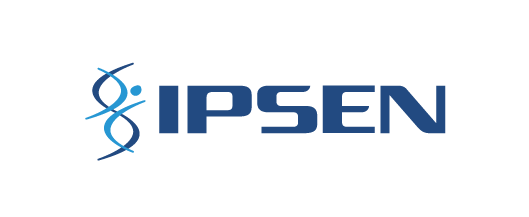By Jim Roach, M.D., Senior Vice President and Global Head, Rare Diseases Therapeutic Area
There are between five and eight thousand rare diseases affecting an estimated 400 million people worldwide.1 The large number of rare diseases, and the relatively small patient populations that each one affects, can mean that for some patients finding a physician who is experienced in diagnosing and treating their disease can take years. Yet even once diagnosed, the broad clinical heterogeneity in how a single rare disease may manifest, develop or may impact someone means that individual patients may have very different clinical presentations.2
It is encouraging that more and more trials are being undertaken in rare diseases, bringing patients access to potential therapeutic agents and expanding the knowledge base across research, clinical and patient communities to inform future clinical programs.
While general principles can be applied to many aspects of trial design across broad specialties, for example oncology or cardiovascular research, for many rare diseases this may not be the case. A lack of diagnostic criteria, unidentified biomarkers or triggers for progression, and limited insights into how the disease may affect health, all contribute to the challenges of setting up a clinical trial that can best serve the needs of patients as well as evaluating the safety and efficacy of an investigational therapeutic agent. Additionally, as many of these diseases have never been subject to rigorous clinical research, nor have there been any medicines approved to treat them, there is no “established” clinical development and regulatory path to follow. As such, those developing potential therapeutic agents for these diseases are “forging the path” or building the plane as we fly it!
Working through clinical trial challenges in the ultra-rare disease, FOP
These challenges mentioned above are representative of those our teams at Ipsen have faced and are working to address in our Rare Diseases Therapeutic Area. We are working in support of patients with Fibrodysplasia Ossificans Progressiva (FOP), an ultra-rare genetic disorder (approximately 1,000 identified patients globally with a reported prevalence of up to 1.36 per million individuals3,4). FOP is characterized by progressive, irreversible formation of bone outside the normal skeleton, known as heterotopic ossification (HO), in places such as in soft and connective tissues and leading to increasing cumulative disability over time.3,4,5
The clinical program to date has given us significant insight into some of these challenges, and we continue to work closely with health authorities, our clinical partners and the patient communities to recognize these learnings to take forward and inform future clinical development. These include:6
- Patient population – by starting with designing and initiating a global, multicenter natural history study (NHS) we have taken steps to address some of the challenges of conducting research in FOP – an ultra-rare disease with a geographically dispersed and diverse patient population. We certainly value the contribution from this organized and highly motivated patient and caregiver community as we learn more about FOP together.
- Trial design – working in an underexplored disease area such as FOP, with a highly variable and unpredictable incidence of HO, our trials including both the NHS and interventional trials are providing previously undocumented and detailed insights into the longitudinal evolution of FOP. The NHS has also provided an important comparator for both our Phase II and Phase III trials to help continue to assess efficacy and safety of our investigational therapy.
- Disease progression – building on the point of trial design, the limited research in FOP also means the methods to monitor long-term progression of HO had not been well established prior to the conduct of our trials. Learnings have therefore been obtained at each stage of progression and interim analyses across the Phase II and Phase III trials as we recognize opportunities to enhance the clinical program to provide further detail on the disease itself, as well as how to most appropriately assess the impact of investigational therapies.
- Whole body HO imaging – prior to the NHS, the optimal imaging modality to assess total body burden and progression was unknown. We are understanding more at every stage of these research programs by continuing to investigate and advance knowledge within these previously unexplored areas.
- Endpoints – with no identified biomarkers of disease progression, alternative functional endpoints were needed in this clinical development program. The priority for most individuals living with FOP remains avoiding the mobility restrictions and disability they experience as their disease progresses. A combination of existing and newly developed tools were used to assess range of motion across joints and physical functioning. It is clear that this will continue to be a focus of future research.
- Dosing – noting the individual variability in disease presentation and progression, we learned that it may be important to provide alternatives for dosing regimens to best address individual patient needs.
The future
We are excited to have been able to present our data at the American Society for Bone and Mineral Research Annual Meeting, and hope that by sharing at international congresses our learnings from navigating the challenging environment of rare disease clinical trials, we can help more researchers build appropriate study designs for clinical development programs in rare diseases, continuing the search for more treatment options for patients living with such conditions.
It really is a privilege to work in rare diseases and I look forward to a continued alliance with our partners across the clinical and patient communities as we collectively continue to find solutions to address such extensive unmet medical needs









